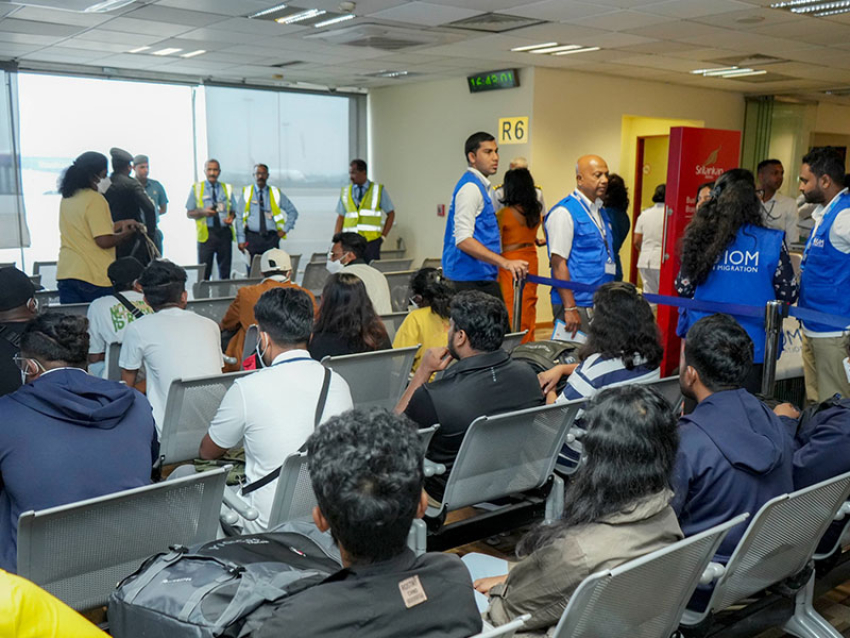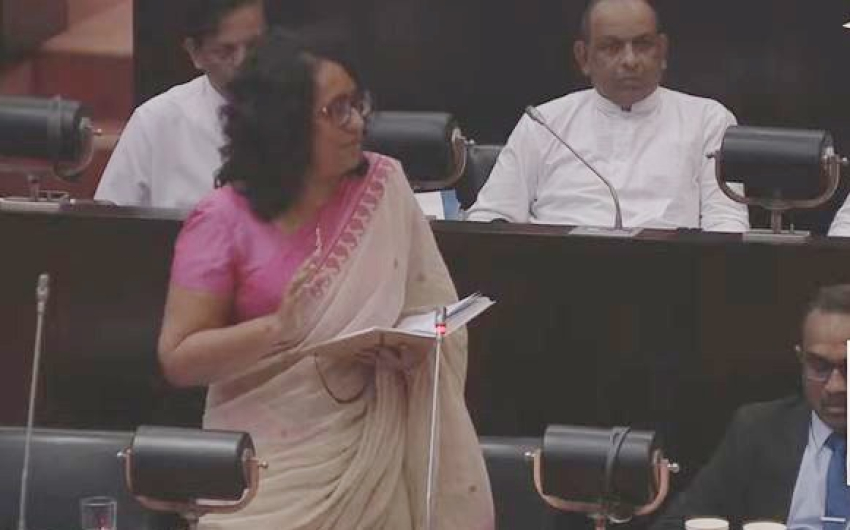Interest in the development of the Muthurajawela Marsh was a major activity which led to a comprehensive study of the marsh and the preparation of an ecological profile and a management plan.This was the first-ever attempt to develop any wetland on the basis of ‘wise use’ criteria
In the past, wetlands were considered wastelands that could be reclaimed or changed for use by mankind. Development initiatives have regarded these areas suited only for such purposes and as a consequence, many wetlands have been drained or used as dump sites for refuse and urban waste.
With increasing knowledge, however, we have understood that wetlands are amongst the world’s most valuable and vulnerable environments on which a variety of plants, animals and human communities depend. Initially, interest in wetlands centred on naturalists and waterfowl hunters, but today, a growing section of society has become aware of the benefits to be accrued from both marine and freshwater wetlands.
Gradually, it is being recognised that by using and maintaining wetlands in a sensible way, other sectors such as agriculture, flood control, water purification, fisheries and recreation could be significantly improved. In Sri Lanka, the conservation of wetlands has been vested mostly with the wildlife sector as reflected by the Fauna and Flora Protection Ordinance of 1938 and its amendments. However, for a number of reasons, due recognition for the importance of conserving wetlands in the country has not effectively come off the ground until recently.
Wetlands
Wetlands are simply habitats with a permanent or temporary accumulation of water with associated floral and faunal communities. Interest in wetlands initially revolved around the exploitation of the associated natural resources, mainly through waterfowl hunting. These interests resulted in the Convention on Wetlands, referred to as the Ramsar Convention – an intergovernmental framework for wetland conservation adopted in 1971. At this historic meeting held in Ramsar, Iran, a consensus evolved on a broad definition for wetlands. Designed to provide international protection to the widest possible group of wetland ecosystems, the Ramsar Convention has defined wetlands as follows.
“Areas of marshes, fen, peatland or water, whether natural or artificial, permanent or temporary, with water that is static or flowing, fresh, brackish or salt, including areas of marine water, the depth of which at low tide does not exceed six metres.”
The wetlands of Sri Lanka, which fit into the Ramsar definition, can be divided into three broad categories:
• Inland natural freshwater wetlands
(e.g., rivers, streams, marshes, swamps,
forests and shallow lakes)
• Marine and saltwater wetlands
(e.g., lagoons, estuaries, mangroves,
seagrass beds and coral reefs)
• Man-made wetlands
(e.g., tanks, reservoirs, rice fields and salterns)
A majority of the wetlands in Sri Lanka are facing various threats that are posed by harmful human activities. An analysis of the identified threats pertaining to the wetlands listed for Sri Lanka in the Directory of Asian Wetlands (Scott, 1989) brings out some interesting information. The most frequently reported threat appears to be siltation. It should be realised that this is usually not caused by factors in the wetland itself, but by actions on lands adjacent or away from the wetland.
The development of aquaculture poses serious threats to wetlands. Since the white spot attack, the rate of conversion has changed to a situation where most of the ponds have been abandoned, thus leaving many desolate areas. The future threat of conversion still looms due to the high price of shrimp. The present broad threats can be summarised under four major categories: habitat deterioration or degradation, direct loss or exploitation of species, spread of invasive alien species (IAS), and natural phenomena.
Direct loss or exploitation of species
Overexploitation of wetland plants and animals has resulted in several species facing the risk of extinction. Factors that contribute to direct loss or exploitation of species are highlighted in the table.
Spread of invasive alien species
Introduction of several exotic aquatic animal and plant species that have eventually escaped into wild habitats are posing a serious threat to native aquatic biodiversity. Observations made during the past five years have enabled documentation of 10 species of invasive alien fauna (eight species of fish, one turtle and one aquatic mollusc) and 12 species of invasive alien flora spreading in different wetland ecosystems across Sri Lanka (Bambaradeniya, 2002). Among them, four species of fauna (Tilapia - Oreochromis mossambicus, Walking catfish - Clarias batrachus, Rainbow trout - Oncorhynchus mykiss and Mosquito fish - Gambusia affinis) and two species of flora (Water Hyacinth - Eichhornia crassipes and Giant Mimosa - Mimosa pigra) are included in the list of the world’s 100 worst invasive alien species. The ornamental fish trade has been the sole contributory factor to the introduction of invasive alien aquatic species into Sri Lanka.
Natural phenomena
Wetlands are threatened by natural phenomena as well. For instance, the recent prolonged drought in the Hambantota area resulted in drying off of several tanks, streams, salt marshes and lagoons, causing death to several wetland animal species. The rise of seawater temperature (due to climate change) resulted in the bleaching of coral reefs, especially in the southwestern part of Sri Lanka. For example, the Hikkaduwa Coral Reef, which was once a rich habitat, is now virtually a dead reef (Rajasuriya et al., 2000). The December 2004 tsunami also resulted in the degradation of coastal wetlands such as mangroves, lagoons and estuaries.
Interest in the conservation of wetlands can be traced back in recent history to the late nineteenth century. Around 1897, enactments to protect the coastal belt systems were promulgated.
The Fauna and Flora Protection Ordinance of 1937 can be considered a major step in wetland conservation. Using this legislation, the wetlands of importance to birds have been declared by the Wildlife Conservation Department as sanctuaries and other protected areas.
The Ordinance has also provided protection to fauna in the immediate limits of any water body. Sri Lanka signed the Ramsar Convention in 1971, but ratified it only in 1990. But interest in wetlands had remained high in the countries’ conservation agenda, as preliminary inventories of wetlands were produced in 1982 (Hoffmann 1982). In 1984, Sri Lanka hosted the regional meeting of the International Council of Bird Protection- Asian Continental Section. The main theme of the meeting was wetland conservation. As a gesture, the government committed to ratify the Ramsar Convention, but the action was initiated in this regard only in 1990. The discussion laid the foundation for the preparation of the Asian Wetland Directory, which was published in 1989.
By 1986, the interests in wetlands picked up with four workshops held by the National Aquatic Resources Agency (NARA), Natural Resources, Energy and Science Authority (NARESA) and the Coast Conservation Department (CCD). Interest in the development of the Muthurajawela Marsh was a major activity which led to a comprehensive study of the marsh and the preparation of an ecological profile and a management plan. This was the first-ever attempt to develop any wetland on the basis of ‘wise use’ criteria. The report was published in 1992.
Since 1987, it was recognised that wetlands were falling under the responsibility of numerous agencies and as such, the need to introduce coordination was recognised. Accordingly, by 1989, an interim Wetland Steering Committee was established by the Central Environmental Authority. This action received Cabinet approval in 1990.
Efforts to prepare a wetland commission, legislation and policy were mooted through this Steering Committee. The Wetland Conservation Project of the Central Environmental Authority resulted in the preparation of numerous wetland site reports, management plans, guiding texts and the consolidation of the wetland division of the CEA. Concurrent strengthening of implementation agencies however did not go in parallel and thus there is a gap between planning and implementation of conservation actions. Since the ratification of the Ramsar Convention in 1990 with the entry of Bundala (presently National Park), Sri Lanka has included and declared five other Ramsar wetland sites; the Anawilundawa ancient cascading tank system, the Maduganga estuary and mangrove ecosystem, Venkali Santuary, Kumana Wetland Cluster and Wilpattu Wetland Cluster.
Conservation biologists and environmentalists will have to work in close collaboration with development planners and policymakers to find viable solutions to the above challenges that would play a decisive role in the future conservation of inland freshwater wetlands in Sri Lanka. (Source: Central Environment Authority)




















